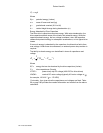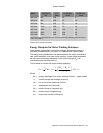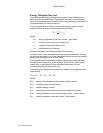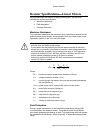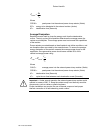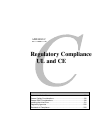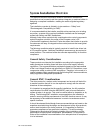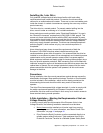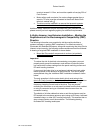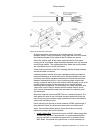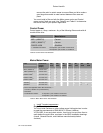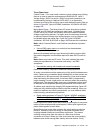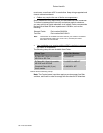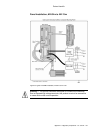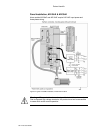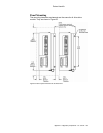
Parker Hannifin
192 Aries User Guide
must not exceed 0.1 Ohm, and must be capable of carrying 25A of
Fault Current.
• Motor safety earth conductor (for motor voltages greater than or
equal to 75 volts) must be connected to the drive’s Motor Earth
terminal, marked with
.
• The drive must be installed in a manner that prevents operator
access to hazardous live terminals during normal operation.
Additional safety measures may be required within your particular market,
please consult you local regulatory agency for additional requirements.
A Highly-Immune, Low-Emission Installation – Meeting the
Requirements of the Electromagnetic Compatibility (EMC)
Directive
The following information was compiled to aid the machine builder or
systems integrator in gaining EMC compliance. For effective control of
Conducted and Radiated Emissions, along with maximizing the Aries Drive’s
inherent noise immunity, the following recommendations should be followed.
A drawing of a typical EMC installation is shown below.
• Mount the Drive and all components to a clean (not painted),
earthed, metal panel.
Important!
To reduce the risk of electrical noise entering your system you must
properly earth ground the enclosure, and remove all paint and other
non-conductive surface coatings from the panel mounting surface and
RF earth bonding locations.
If you mount the Aries drive in an equipment cabinet, terminate cable
braids (screens) at the entrance of the enclosure. This can be easily
accomplished using the “additional EMC installation hardware” shown
below.
The only exception is for the motor braid, which must return to the
drive’s R-Clamp (located on the bottom of the Aries drive. Do not return
the motor braid to any other location, its function is to return high-
frequency chopping current back to the drive. This may require
mounting the connector on a sub-panel insulated from the main cabinet,
or using a connector having an insulated internal screen from the
connector housing.
The shields of all other cables that enter or exit the enclosure must be
RF bonded to the enclosure entrance point using an R-Clamp, bulkhead
clamshell clamp, or other 360° bonding technique. This ensures that no
stray noise will enter or exit the enclosure. The following drawing
illustrates 360° bonding techniques.



